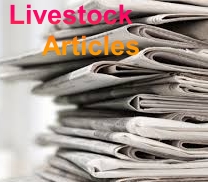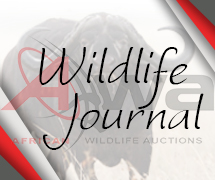Beefmaster Cattle Society
Tony Brink, who farmed at Nietverdiend in the old north-west Transvaal, became the pioneer of Beefmaster cattle in 1970, when he imported the first Beefmaster semen from Botswana to South Africa.
The male offspring were only classified as phase one animals, but they still made a major contribution to herds in the country due to a shortage of good quality bulls at the time.
When it became illegal to import genetic material, quite a few South African farmers started smuggling Beefmaster semen into the country. The demand for the genetic material grew strongly, resulting in the first Beefmaster club being hosted in November 1985 on Pieter Bosch’s farm, Mansole, near Bela-Bela in Limpopo.
The Beefmaster Cattle Breeders Society, Beefmaster SA, was formed in 1986 due to the growing demand for this American synthetic breed, with Pieter Bosch being appointed as the first president of the society.
The society represents the needs of Beefmaster stud breeders and has been giving direction through the years to ensure the development of a beef cattle that is well adapted to South African climatic conditions and thrives under normal veld conditions. The breed was accepted by SA Studbook in 1987, after which genetic material could be legally imported into the country.
At the time of writing, Beefmaster was one of the fastest growing and second largest beef breeds registered with SA Studbook and the fourth largest beef breed in the United States. The breed is primarily produced in the States, South Africa and Brazil.
Origins of Beefmaster SA
The Beefmaster cattle breed is a relatively young breed, developed by Tom Lasater in the 1940s out of work his dad, Ed, started on their Lasater Ranch in Texas in the United States around the early 1900s.
The Beefmaster cattle breed was developed out of an intensive crossbreeding programme between Brahman and Hereford bulls, Hereford cows and Brahman bulls, and Shorthorn cows and Brahman bulls, with the descendants being bred in a three-way cross to different bulls within the herd.
The herd had been closed since 1937, which means that no new genetic material had been introduced since then. The closure is said to have led to increased performance in the offspring.
Lasater believed that breeders should ignore general and cosmetic traits, such as skin and coat colour, horns and height in favour of economically important traits, such as beef and milk traits. As such, the Beefmaster was developed to conform to what Lasater coined as the “Six Essentials” of breeding, namely disposition, fertility, weight, conformation, hardiness and milk production. This in turn has led to the breed’s name, which implies that it is the Master of all Beef breeds.
The Beefmaster, which was accepted by the United States Department of Agriculture in 1954, has slightly less than one half Brahman blood and slightly more than one-fourth Hereford and Shorthorn.
Beefmaster SA Membership
Farmers need to apply to join the Beefmaster SA Breeders Society, during which they also undertake to abide by the stipulations, order and regulations of the society’s constitution.
Along with this they have to pay Beefmaster SA and SA Studbook enrolments fees and are charged an additional amount based on the number of animals participating in the programme.
Membership is exclusive to farmers, who want to build or have a Beefmaster stud. The main difference between stud breeding and commercial production is that it is far more intensive, requiring much more time and attention to detail. Breeders, for example, have to keep records of each stud cow and stud bull, from the time they were born, as well as their offspring. Records include birth date and weight, weaning weight, weight at twelve and eighteen months, parentage and so forth.
All the animals are inspected once over the age of eighteen months. Bulls that make the grade are marked with the Beefmaster “Rocking B” brand and may be sold and used for breeding purposes. Bulls that do not make the grade have to be culled. Heifers that do not make the grade, may be sold or incorporated into commercial herds.
All the stud animals should be marked, either by tattoo, hot iron or freeze branding, with the stud mark as well as the year and identification number. An ear tag may also be used – these work best but can get lost, according to Beefmaster SA.
All Beefmaster stud animals should be registered with SA Studbook, who processes and safeguards the data on behalf of the breeders. Breeders should carefully check that animals are correctly marked and registered when buying or introducing new animals to the stud.
Beefmaster SA Standards
Cattle have to comply with certain minimum standards to be registered as Beefmaster cattle.
Firstly, all animals have to participate in phases A and B of the National Performance Test Scheme. Bulls need to meet certain minimum criteria in terms of their average daily growth when they are weighed at 205 days, 365 days and 18 months of age. They also need to achieve a minimum average daily gain if submitted for phase D or phase C tests.
For cows, a heifer must calf before the age of 39 months and calving intervals may not exceed twenty-four months. There is also a minimum number of calves that a dam has to produce before certain ages. A cow should also rear at least two of any three consecutive calves up to weaning or be culled.
A cow may also not suckle more than two calves weaned more than ninety days apart, with good record-keeping required for adopted calves.
All animals need to be functionally fit. In other words, they are not allowed to have any physical or visual defects, nor any diseases or congenital abnormalities, such as poor temperament, woolly summer coat or any other disorder.
Beefmaster Cattle
The Beefmaster derived its name thanks to its superior beef production qualities.
Tom Lasater, who ranched in South Texas and in Colorado in the USA, developed the Beefmaster in 1948 through strategic cross-breeding of Brahman, Hereford and Shorthorn. According to The Dale Lasater Ranch, Tom did not plan on developing a new breed, but aimed to produce profitable functional cattle, with the ability to thrive with minimal inputs, under harsh production conditions.
The Foundation Beefmaster herd has been closed since 1937, which means that no new genetic material, such as cows, bulls, semen or embryos had been introduced into the herd since then. The general expectation was that this would lead to inbreeding problems, after some time, but instead, it resulted in a superior breed that produces uniform high-quality offspring and beef.
Interestingly, Dr Jan Bonsma, the Bonsmara pioneer in South Africa, was friends with Tom Lasater, so the Bonsmara and Beefmaster developed relatively simultaneously, with various similarities, according to Beefmaster South Africa. For one, both breeds comprise 25% Hereford and 25% Shorthorn, but the Bonsmara has 50% Afrikaner, whereas the Beefmaster has 50% Brahman.
The Beefmaster received its name because it was seen as superior, or the “master of all beef breeds.” It was accepted as a new breed by the United States Department of Agriculture in 1954.
Production in South Africa
The Beefmaster is a medium framed animal.
Beefmaster cattle are a large breed of cattle known for its beef production in South Africa. According to Beefmaster SA, Tony Brink is seen as the pioneer of the breed in the country. In 1970, he imported the first Beefmaster semen via Botswana to his farm Nietverdiend in north-west Transvaal, now called North West Province. The male offspring were only classified as phase 1 animals, but still made a huge contribution to herds in the country, since there was a shortage of good quality bulls at the time.
When it became illegal to import genetic material, quite a few familiar cattle farmers also “smuggled” semen into the country. The demand for the genetic material grew strongly, resulting in the first Beefmaster club being hosted in November 1985 on Pieter Bosch’s farm, Mansole, near Bela Bela in Limpopo.
Pieter Bosch and Tony Brink hosted the first auction shortly thereafter and the Beefmaster Cattle Breeders Society of South Africa was established in 1986 with Pieter Bosch as the first President. The breed was accepted by SA Studbook in 1987, after which genetic material could be imported legally from the United States.
Attributes
Beefmaster cows make excellent mothers, producing above average milk.
The Beefmaster is a medium framed breed, with cows ready to produce their first calves from the age of 14 months and an average inter calf period of 397 days. The cows make excellent mothers, with above average milk. Calves are small at birth, resulting in birth complications being almost non-existent, but grow fast and in effect achieve some of the best weaning weights of all the breeds.
Beefmaster SA, as far as possible, aims to use scientific tools to improve the breed. All stud animals, in effect, have to be approved through the Studbook evaluation system before they can be used as stud animals. Registered animals have to comply with high standards, with bulls being marked with a “B” on the right flank to show it complies with these standards. The Beefmaster, at the time of writing, was one of the fastest growing and second largest breeds with SA Studbook.
The colour of the Beefmaster has never really been a breeding priority, but the cattle generally have red coats.
Production Regions
The cattle are well adapted and produced throughout South Africa.
Beefmaster cattle have a great temperament, making them easy to manage. They are also highly adaptable, so are produced throughout South Africa, from the Sneeuberge in the Eastern Cape to the Sandveld of the Kalahari.
Use
Registered Beefmaster bulls are able to significantly increase the weaning weight of commercial herds.
Beefmaster cattle can be used on their own in closed herds, or in crossbreeding programmes to produce hybrid vigour and enhance meat quality, maternal traits and hardiness of other breeds. Registered Beefmaster bulls, for example, are able to easily increase the weaning weight of commercial herds by twenty to thirty kilograms, resulting in farmers making more per calf than they would have with some of the indigenous breeds.
Feedlots are willing to pay a premium for Beefmaster calves, because of their adaptability, the fast rate at which the calves gain weight and the high percentage meat produced by the cattle.
Meat Quality
The quality of Beefmaster beef is excellent, resulting in high consumer and abattoir demand.








